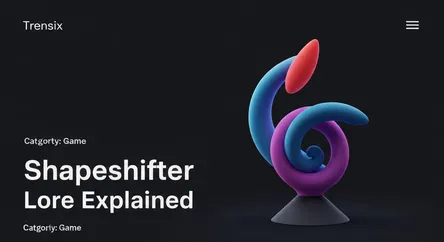Game
Shapeshifter Lore Explained

Explore the lore of shapeshifters, mythical beings who change form. Learn why this versatile archetype is a popular trend in modern video games.
What is it?
A shapeshifter is a being with the supernatural ability to physically transform. This ancient archetype is found in folklore worldwide, from werewolves to mythological gods. In video games, shapeshifters appear as playable classes like Druids in World of Warcraft, who can turn into animals, or as deceptive enemies who can mimic allies. The core concept revolves around changing form to gain new abilities, such as flight, enhanced strength, or stealth. This allows for incredibly dynamic characters who can adapt to any situation, making them a staple in fantasy settings from The Elder Scrolls to Dungeons & Dragons.
Why is it trending?
Shapeshifting is a trending game mechanic because it offers unparalleled gameplay versatility and narrative depth. For players, it provides multiple playstyles within a single character, enhancing replayability and strategic options. A character who can become a bear for combat, a cat for stealth, and a bird for travel is inherently more engaging. For developers, it's a powerful tool for creating complex puzzles and dynamic storytelling. Themes of hidden identity, deception, and inner conflict are naturally woven into shapeshifter characters, making for compelling and unpredictable plots.
How does it affect people?
This archetype resonates with players by offering a fantasy of ultimate freedom and adaptability. Playing as a shapeshifter provides a sense of empowerment, allowing players to overcome obstacles through clever transformation rather than brute force alone. It taps into a fundamental human fascination with transformation and exploring different identities. This connection makes the gameplay more personal and immersive, as players master the various forms and strategically decide which identity is best suited for the challenges they face. It’s a mechanic that rewards creativity and tactical thinking.